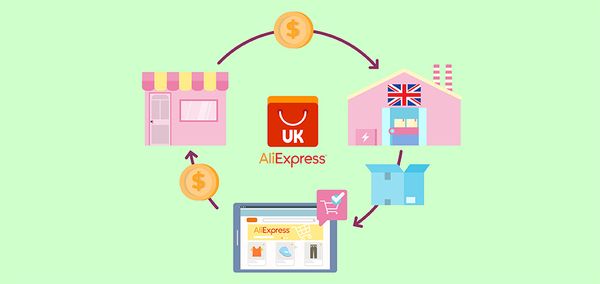8 Tips to Boost Holiday E-commerce Sales

The holiday season is a prime time for holiday e-commerce businesses to connect with customers and achieve remarkable sales growth. With an influx of shoppers searching for gifts and seasonal essentials, this period offers a unique opportunity for brands to gain traction and establish lasting connections. However, competition intensifies, and customers’ expectations around promotions, product availability, and seamless shopping experiences are high. For an e-commerce brand, a well-rounded strategy encompassing promotions, customer engagement, logistics, and user experience is essential to capitalize on the holiday shopping surge.
8 Tips to Boost Holiday E-commerce Sales
Below are eight key tips to help e-commerce brands maximize their holiday sales and provide exceptional customer experiences.
1. Optimize Your Website for the Holiday Season
A well-optimized website significantly enhances customer experience and increases the likelihood of conversions. With higher-than-average holiday traffic, e-commerce sites benefit from timely technical updates that ensure fast loading times and smooth navigation. Subtle holiday-themed elements—such as festive banners, holiday color schemes, and themed product categories—can make the shopping experience feel relevant and inviting without overwhelming the user.
Website performance is another critical factor. High traffic volumes can slow down a site if not properly optimized, leading to cart abandonment. Ensuring fast loading times, particularly on product pages and during checkout, helps retain customers. Additionally, a user-friendly mobile experience is essential as mobile devices account for a large share of online holiday shopping.
2. Create Holiday-Specific Promotions and Discounts
Promotions tailored to the holiday season tend to attract more customers. Limited-time discounts, bundle offers, or exclusive seasonal deals appeal to shoppers who are motivated by the idea of holiday savings. Popular holiday promotions may include free shipping on orders over a certain amount, buy-one-get-one (BOGO) offers, or exclusive discounts for first-time customers.
Timing plays an important role in the effectiveness of these offers. Many businesses introduce promotions gradually, beginning with early-bird deals and culminating in sales for Black Friday, Cyber Monday, and other key dates. Creating a consistent calendar of offers can encourage repeat visits from customers seeking the best holiday deals.
3. Personalize Marketing Campaigns
Personalization in e-commerce marketing resonates well with holiday shoppers, as it creates a more engaging and relevant experience. By segmenting audiences based on their purchase history, browsing behavior, or location, brands can deliver messages that feel tailored to individual needs. For example, a holiday email campaign can offer product recommendations based on the recipient’s previous purchases or browsing history.
Retargeting ads and dynamic website content can also guide users toward products that match their preferences. Personalization tools help optimize these interactions, ensuring that each customer sees products they are more likely to purchase. This approach not only enhances engagement but also encourages repeat purchases from customers who feel recognized and valued.
4. Leverage Social Media and Influencer Marketing
Social media platforms serve as powerful tools for holiday e-commerce marketing. Engaging content, such as festive product showcases, gift guides, and user-generated photos, can draw shoppers in and keep them interested. Interactive elements, such as Instagram Stories, reels, or live product demonstrations, add a real-time feel to the brand’s holiday promotions.
Influencer partnerships can help amplify a brand’s reach. Influencers with audiences aligned to the brand’s target demographic can introduce products in an authentic way, boosting brand credibility. Collaborations with micro-influencers, in particular, often result in high engagement rates, as these influencers tend to have strong connections with their followers. Leveraging influencer endorsements during peak holiday shopping periods can drive awareness and conversions.
5. Implement Urgency and Scarcity Tactics
Encouraging customers to act quickly through urgency tactics can be effective during the holiday season, especially when customers are purchasing gifts or limited-edition items. Techniques such as countdown timers on product pages, low-stock alerts, or time-sensitive offers can motivate quicker buying decisions.
Adding elements of scarcity, such as “Only a few left in stock” messages, can increase demand for popular items. Limited-time holiday promotions and flash sales further enhance this sense of urgency, tapping into shoppers’ fear of missing out (FOMO). Such tactics align with the busy nature of holiday shopping, where customers often look to complete their purchases efficiently.
6. Enhance Customer Service and Support

|
Manage Multiple Stores In One Account Multiple Stores Management - Link and manage multiple stores on different platforms in one place |
Customer service often influences purchasing decisions, particularly during the holidays when shoppers are time-sensitive and may have questions about returns, delivery times, or product specifications. Brands that prioritize responsive customer support create a more seamless shopping experience. Offering live chat, comprehensive FAQs, and clear contact options can reduce friction and answer customers’ questions promptly.
Providing clear, upfront information on shipping timelines and return policies also improves transparency and builds trust. Customers shopping for holiday gifts are especially likely to value a straightforward return process. Positive customer support experiences often lead to repeat business and positive reviews, contributing to brand loyalty beyond the holiday season.
7. Optimize for Mobile Shoppers
Mobile shopping continues to grow, and many holiday shoppers prefer browsing and buying from their phones. A mobile-optimized e-commerce site can cater to these customers effectively, offering a streamlined experience on smaller screens. Mobile usability improvements, such as larger buttons, simple navigation, and mobile payment options, help reduce cart abandonment and increase conversions.
To capture the attention of mobile shoppers, brands may also leverage mobile-specific advertising strategies, such as social media ads, in-app promotions, or push notifications. Optimizing the website and checkout process for mobile users ensures that customers can complete purchases effortlessly, contributing to higher overall sales.
8. Plan Inventory and Logistics in Advance
Effective inventory management is essential to meet holiday demand. By analyzing historical data and trends, brands can forecast product demand and ensure they stock sufficient quantities of popular items. Collaborating with suppliers and logistics partners well in advance minimizes potential disruptions, ensuring that items remain in stock and deliveries run smoothly.
Displaying estimated delivery times on product pages and setting holiday shipping cut-off dates provides customers with clear expectations for when their items will arrive. Additionally, flexible and clear return policies can make holiday gift-buying less daunting. Proper logistical planning not only supports sales but also reinforces customer trust, leading to higher satisfaction and repeat purchases.
How to Create a Holiday E-commerce Strategy
An effective holiday e-commerce strategy requires a systematic approach that covers marketing, operations, and customer engagement. Here are five key steps to creating a comprehensive holiday e-commerce strategy:
1. Set Specific Goals and Define Your Target Audience
Identifying clear, measurable goals allows an e-commerce brand to evaluate the success of its holiday efforts. Goals may range from boosting revenue and increasing conversion rates to acquiring new customers or promoting specific products. Each goal should be supported by tactics that align with the brand’s objectives.
Defining the target audience is equally important. Segmenting customers based on purchase behavior, demographics, and shopping patterns allows for more tailored marketing messages. This segmentation can guide product recommendations, email content, and retargeting strategies to meet each segment’s unique needs.
2. Create a Holiday Marketing Calendar with Key Campaigns
A holiday marketing calendar ensures that every phase of the holiday season, from early promotions to post-holiday sales, is covered. Key dates, such as Black Friday, Cyber Monday, and shipping cut-off deadlines, can serve as anchors around which to build campaigns.
The calendar should outline all planned marketing activities, including email campaigns, social media posts, and influencer partnerships. By preparing these campaigns in advance, brands can maintain a consistent presence throughout the season, fostering a sense of continuity and reinforcing their holiday offerings across multiple channels.
3. Optimize Your Website for Speed, Mobile Use, and User Experience
Website optimization is a critical aspect of a successful holiday strategy. A fast, mobile-responsive website with smooth navigation helps retain customers and facilitates seamless purchases. By conducting site speed tests, simplifying the checkout process, and incorporating mobile-friendly payment options, brands can improve overall usability.
Adding holiday-specific design elements, such as gift guides or festive banners, can further enhance the shopping experience. Mobile optimization, in particular, is essential, as many holiday shoppers browse and buy via smartphones. An efficient mobile experience contributes to higher conversion rates and improved customer satisfaction.
4. Use Targeted Discounts and Limited-Time Promotions
Holiday-specific promotions drive excitement and incentivize purchases. By offering discounts, free shipping, or exclusive deals, brands can attract both new and existing customers. Limited-time offers create urgency, while bundle deals or holiday packages can encourage larger purchases.
Targeted discounts based on customer segments can make promotions feel more personal. For instance, exclusive discounts for loyal customers or first-time shoppers can foster brand loyalty. Scheduling these offers as part of a holiday calendar ensures a continuous flow of promotions, keeping customers engaged and motivated to buy.
5. Prepare for High Demand in Inventory and Logistics

|
Find Better Supplier For Products DSers Supplier Optimizer - One click to filter out the most proper suppliers for your products |
Inventory management and logistical planning ensure that popular products remain in stock and that orders are shipped promptly. Forecasting demand based on historical data can help prevent stockouts and overstocking. Collaborating with reliable suppliers and logistics providers supports timely restocking and delivery.
Clear communication regarding holiday shipping deadlines and return policies is also important. Many holiday shoppers prioritize on-time delivery, so transparent shipping timelines enhance trust. Ensuring a smooth return process makes gift-buying easier and builds customer confidence in the brand.
Conclusion
The holiday season presents immense potential for holiday e-commerce businesses to achieve substantial growth. By implementing a thoughtful approach that includes website optimization, targeted promotions, audience segmentation, and operational planning, brands can capture the attention of holiday shoppers and provide a memorable shopping experience. Each step, from personalizing marketing campaigns to managing logistics, contributes to a well-rounded holiday strategy that not only drives sales but builds customer loyalty.
Need more information about dropshipping? Explore DSers blog now!











 Company
Company
 Why Choose DSers
Why Choose DSers
 Blog
Blog
 Help Center
Help Center




 Live Chat
Live Chat